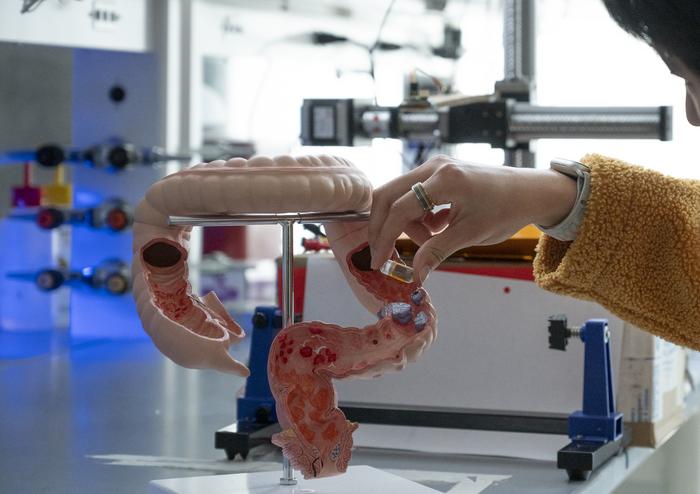- TECHSWU
- Posts
- TECHSWU #54
TECHSWU #54
Welcome to TECHSWU, your go-to destination for all things tech that matter in your daily life!


The fashion industry is facing a transparency problem, but cloud computing could be the solution. The EU Green Claims Directive could soon require fashion brands to provide evidence to back up sustainability claims and label products accordingly.
Cloud computing would allow companies to source and share sustainability data, enabling them to meet these requirements and provide transparency to consumers. Cloud computing offers on-demand services over the internet, including data storage and software, which can streamline processes and make data easily accessible.
While cloud computing is already being used in the fashion industry for purposes like product authentication and customer suggestions, there has been little focus on its potential for managing sustainability data. However, experts believe that if harnessed properly, cloud computing could revolutionize the fashion industry's design, production, and consumption practices.

Rebuilder AI Inc. is set to showcase its next-generation 3D Vision AI technology at the Augmented World Expo (AWE) 2024 in Long Beach, California.
The South Korean startup specializes in producing 3D content and aims to create ecosystems that can be applied across various industries. At the expo, Rebuilder AI will focus on its 3D Reconstruction technology, specifically its VRIN 3D solution, which quickly converts objects or spaces captured by a user's smartphone into high-quality 3D content.
The company will also showcase its ability to generate 3D content from users' imaginations and transform the style or shape of 3D content into customized styles. Rebuilder AI's participation in AWE 2024 is aimed at establishing partnerships and acquiring customers.
The event is an opportunity for global AI companies and institutions to showcase the latest technologies and products.


Oracle founder Larry Ellison has seen his wealth increase by $14 billion overnight, making him the seventh-richest person on Earth, according to the Bloomberg Billionaires Index. Ellison's fortune now stands at $152 billion, largely due to his ownership of more than 40% of Oracle's cloud applications business.
The surge in wealth comes after Oracle posted positive year-end financial results, with CEO Safra Catz highlighting the company's increasing focus on artificial intelligence (AI). In fact, AI has been a key driver of wealth growth for many Silicon Valley tech giants, including former Microsoft CEO Steve Ballmer and the founder of Google parent company Alphabet, Sergey Brin.
The super-rich have collectively seen at least $150 billion added to their fortunes thanks to AI.


Childhood obesity is a global health problem that can lead to chronic diseases and other health issues. To combat this issue, researchers have developed the WUDI (Would You Do It?) framework, which leverages the Internet of Things (IoT) and artificial intelligence (AI) to provide personalized health recommendations and incentives for children.
The framework collects data from wearable devices and smartphones, such as movement, GPS, heart rate, and sleep time, and uses advanced AI models to predict obesity. Involving humans in the process and providing appropriate rewards has been shown to effectively motivate children and help manage their body mass index (BMI).
The framework consists of four layers: perception, network, service, and application, and uses an ensemble-based learning approach for prediction accuracy. While there are limitations to the framework, such as the need to consider individual characteristics and the potential negative impact of excessive rewards, it shows great promise in addressing childhood obesity.


Dream Machine, a new rival to OpenAI's Sora, has arrived as a text-to-video AI tool that allows users to generate short video clips based on text prompts. While OpenAI's Sora and other similar platforms are not yet accessible to the public, users can try Dream Machine for free.
Developed by Luma AI, the tool has a free tier that offers limited features, including a resolution of 1360x752 and clip lengths of five seconds. Users can input prompts into the search bar and receive the generated clips in their accounts, although there may be a waiting period due to high demand.
While Dream Machine is a promising tool for beginners, its technical limitations and unclear training data raise questions about its usefulness beyond personal use or enhancing GIFs. Nonetheless, it presents an engaging opportunity to test out AI video generation until more advanced and widely available tools become accessible.

This article highlights various economic indicators and trends affecting the retail industry. It emphasizes the importance of understanding and adapting to changing consumer behavior and preferences.
The labor market is in a holding pattern, with job openings shrinking but layoffs at their lowest level since 2022. The National Retail Federation predicts stronger-than-expected job growth and has maintained its forecast of 2.
5-3.5% growth in retail sales for 2024.
Several international retail markets are experiencing mixed results, with UK retail sales increasing by only 0.7% and India's real GDP growth beating forecasts.
The article also discusses the use of technology in retail, such as electronic shelf labels, virtual shopping experiences, and AI consumer assistance. The conclusion is that while the economic landscape remains uncertain, retailers must continue to innovate and adapt to meet changing consumer needs.


Researchers at the USC Viterbi School of Engineering have developed an ingestible sensor that can detect stomach gasses and provide real-time location tracking without relying on GPS. The smart pill, known as the "Fitbit for the gut," is designed to identify gasses associated with gastritis and gastric cancers and is monitored through a wearable system.
The capsule is equipped with both location tracking electronics and an optical sensing membrane that is selective to gasses. By detecting the presence of ammonia gas, which is a component of gut bacteria H pylori, the device can potentially detect peptic ulcers, gastric cancer, and irritable bowel syndrome.
There are also potential applications for the device in monitoring brain health, as neurotransmitters in the gut have been correlated with neurodegenerative diseases. The device is currently undergoing testing in swine models.
This innovation has the potential to revolutionize gut and brain health monitoring.


Samsung is introducing a limited edition smart sneaker called the Shortcut Sneaker which allows wearers to control their Samsung phones with foot movements. The sneakers have sensors built into the soles that can trigger five different shortcuts through five unique movements.
While the specific movements are not explained, one example given is clicking the heels together to make a phone call. Samsung suggests that wearers can also perform dance moves like the moonwalk to make calls and play music.
Only six pairs of the Shortcut Sneakers are available and they are being given away as part of a contest for Samsung Netherlands Members. It is unclear if the sneakers will be available to consumers worldwide, but Samsung is known for its constant innovation in wearable technology.


A New Jersey man is speaking out about his wrongful arrest after being misidentified through facial recognition software, the same system recently implemented by police in Ontario’s Peel and York regions. Nijeer Parks spent 10 days in jail for a theft and assault he did not commit, and was ultimately released after providing evidence he was in another city at the time of the incident.
Parks’s arrest was based on facial recognition technology that falsely linked him to the crime. He states that the incident highlights the limitations and biases of such software.
This case raises concerns about the accuracy and potential biases of facial recognition technology, particularly in its ability to misidentify racialized individuals. Police in Peel and York regions insist that they have implemented safeguards to prevent misidentifications, and that the software will only be used as an additional tool in investigations.
However, concerns around privacy and potential biases associated with facial recognition algorithms persist.

The article discusses how eSIM technology is revolutionizing the consumer experience for mobile virtual network operators (MVNOs). Traditionally, the customer onboarding process for MVNOs has been a cumbersome and time-consuming task, requiring the purchase of a physical SIM card and manual set-up.
However, eSIMs, or embedded SIMs, eliminate the need for physical cards and enable connectivity to be seamlessly integrated into a device during the manufacturing process. This means that users no longer have to worry about inserting SIM cards or setting up accounts – connectivity is already built-in.
The article explains that eSIM technology is the "holy grail" for operators, as it simplifies the onboarding process, enhances the customer experience, and allows for more dynamic and tailored service offerings. The adoption of eSIM technology presents both opportunities and challenges for MVNOs, as they can differentiate themselves in a competitive market but must also navigate regulatory hurdles and invest in innovative technologies to retain their customers.


